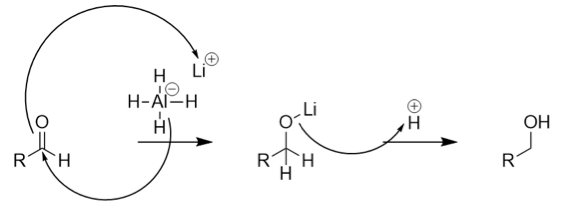
When acetaldehyde is reacted with
A.
B.
C.
D.
Answer
407.7k+ views
Hint: The molecular formula of acetaldehyde is
Complete answer:
The molecular formula of acetaldehyde is
The general reaction mechanism for the above reduction is given as:

From the above mechanism, we conclude that the reduction of aldehyde takes place via hydride transfer. Upon reduction, the number of carbon atoms in the moiety remains the same. Therefore, option (B) is correct. In contrast, option (A) contains
From the above discussion, we conclude that option (B) is correct.
Note:
It is important to note that acetaldehyde undergoes reduction when reacted with
Complete answer:
The molecular formula of acetaldehyde is
The general reaction mechanism for the above reduction is given as:

From the above mechanism, we conclude that the reduction of aldehyde takes place via hydride transfer. Upon reduction, the number of carbon atoms in the moiety remains the same. Therefore, option (B) is correct. In contrast, option (A) contains
From the above discussion, we conclude that option (B) is correct.
Note:
It is important to note that acetaldehyde undergoes reduction when reacted with
Recently Updated Pages
Master Class 12 Business Studies: Engaging Questions & Answers for Success

Master Class 12 English: Engaging Questions & Answers for Success

Master Class 12 Social Science: Engaging Questions & Answers for Success

Master Class 12 Chemistry: Engaging Questions & Answers for Success

Class 12 Question and Answer - Your Ultimate Solutions Guide

Master Class 11 Economics: Engaging Questions & Answers for Success

Trending doubts
Draw a labelled sketch of the human eye class 12 physics CBSE

a Tabulate the differences in the characteristics of class 12 chemistry CBSE

Which one of the following is a true fish A Jellyfish class 12 biology CBSE

Why is the cell called the structural and functional class 12 biology CBSE

Differentiate between homogeneous and heterogeneous class 12 chemistry CBSE

Write the difference between solid liquid and gas class 12 chemistry CBSE




